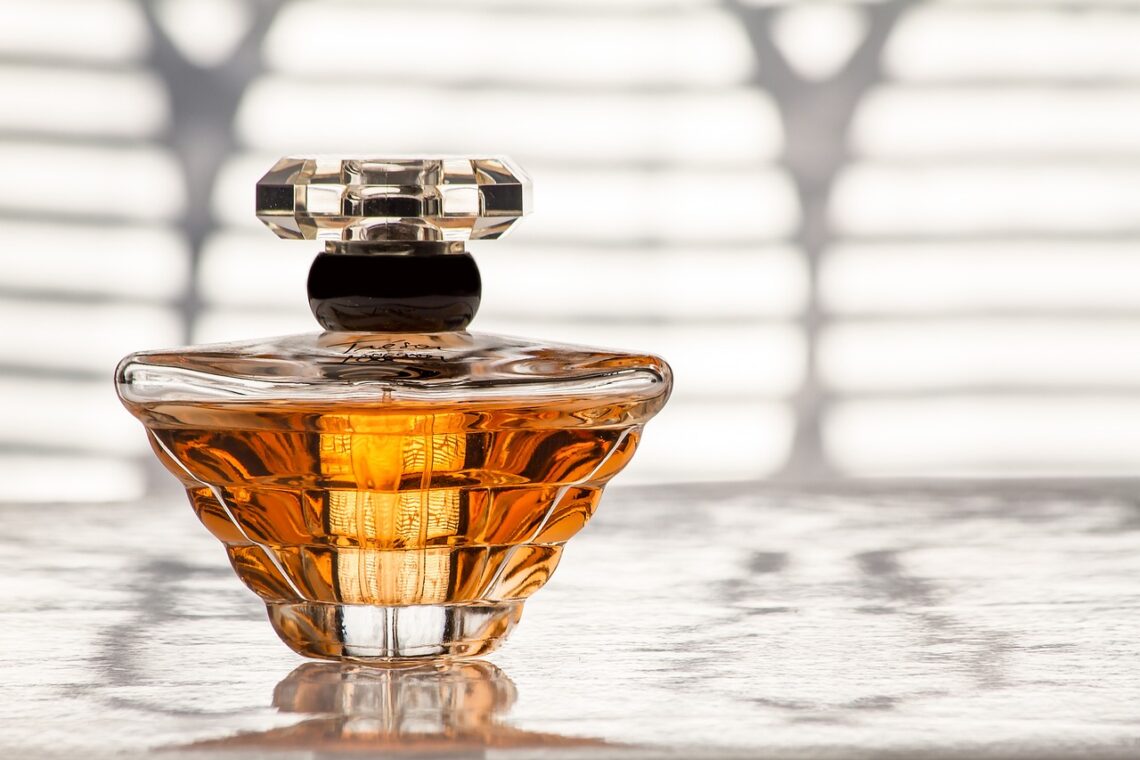
Tonka Bean: An Icon In The World of Perfumery
The Tonka bean is an ingredient in the world of perfumery, renowned for its warm, sweet, and multifaceted scent. Extracted from the seeds of the Dipteryx odorata tree, native to South America, the Tonka bean has been a staple in the creation of fragrances for centuries. Its complex aroma—featuring notes of vanilla, almond, cinnamon, and a touch of spice—has made it an irreplaceable component in many luxurious and timeless perfumes.
From its humble origins in the Amazon rainforest to its place in the global fragrance industry, the Tonka bean’s journey is both captivating and complex. This article explores its scent profile, its unique role in perfumery, popular perfumes featuring Tonka, and its evolving future in the world of scent-making.
The Origin and Harvesting of Tonka Beans
The Dipteryx odorata tree, also known as the Tonka tree, is native to Brazil, Venezuela, and Guyana, where it grows in the dense rainforests of the Amazon. The tree produces fruits containing a single seed—the Tonka bean. These seeds are harvested, dried, and fermented to enhance the aroma of the bean. The fermentation process is essential in unlocking the rich, complex scent for which the Tonka bean is so famous.
While the Tonka bean’s role in perfumery is well-known today, its early uses were often spiritual and medicinal. Indigenous cultures believed that Tonka beans could cure illnesses and attract good fortune, often using them in rituals or as amulets. These mystical associations only deepened the allure of the Tonka bean in the world of fragrance.
Tonka Bean’s Scent Profile
At the heart of the Tonka bean’s allure in perfumery lies its captivating scent profile. Tonka beans contain a high concentration of coumarin, a chemical compound that imparts a sweet, vanilla-like fragrance. However, the Tonka bean’s complexity extends beyond vanilla. Its aroma is often described as a harmonious blend of several warm, comforting notes, creating an overall sensation that is rich, luxurious, and exotic.
- Top notes: The initial impression of the Tonka bean in a fragrance is often sweet and slightly spicy. Hints of cinnamon, clove, and sometimes a faint note of cherry or almond can be detected.
- Heart notes: As the fragrance develops, the Tonka bean reveals its creamy vanilla essence, akin to that of fresh-cut vanilla pods, but with added depth from subtle undertones of caramel and tobacco.
- Base notes: The dry-down phase is where the Tonka bean shines the most. Its warm, earthy, and slightly woody qualities emerge, leaving a lasting impression that is smooth and enveloping. The presence of coumarin gives the fragrance an almost powdery finish, akin to the softness of suede.
Tonka bean’s versatility lies in its ability to blend seamlessly with other notes, allowing perfumers to create both gourmand and oriental fragrances. Its sweet, nutty, and earthy qualities make it an ideal base note, helping to stabilize and extend the longevity of the scent.
The Role of Tonka Bean in Perfumery
In perfumery, Tonka bean is typically used as a base note due to its deep, rich, and lasting aroma. Base notes form the foundation of a fragrance, giving it structure, longevity, and a lingering scent that can last hours after the initial application.
Tonka bean, with its complex and multifaceted profile, is particularly favored for its ability to blend and enhance other ingredients. It acts as a fixative, prolonging the life of the more volatile top and middle notes while providing warmth and depth. This makes it an invaluable ingredient in many classic perfumes, particularly in the oriental, gourmand, and woody fragrance families.
- In Gourmand fragrances: Tonka bean is often used to evoke feelings of warmth and indulgence. Its sweet, dessert-like qualities make it ideal for creating gourmand scents reminiscent of vanilla, caramel, and baked goods.
- In Oriental fragrances: Here, the Tonka bean adds an exotic richness. When paired with spices like cinnamon, cloves, or nutmeg, the bean’s inherent warmth shines, enhancing the sensuality of oriental compositions.
- In Woody and Ambery fragrances: Tonka bean’s earthy, tobacco-like nuances complement woody notes such as sandalwood, cedar, or patchouli, giving the fragrance a more grounded and natural feel.
The use of Tonka bean has transcended time and trends. Whether in classic perfumes or modern niche fragrances, the bean’s ability to blend warmth with subtle sweetness ensures that it remains a key player in the art of scent-making.
Popular Perfumes Featuring Tonka Bean
Many of the most beloved and iconic perfumes in the world owe their warm, enveloping quality to the Tonka bean. Here are some standout fragrances that showcase the Tonka bean’s versatility and beauty:
- Tom Ford – Tobacco Vanille:
An oriental masterpiece, Tobacco Vanille is a rich, luxurious fragrance that perfectly balances the creamy sweetness of Tonka bean with bold tobacco and spicy notes. The bean adds warmth and depth, making the scent incredibly sensual and long-lasting. - Dior – Fève Délicieuse:
A gourmand delight, this fragrance celebrates the Tonka bean in all its glory. Fève Délicieuse combines the bean’s rich, sweet vanilla-like aroma with caramel, praline, and cherry, creating an irresistible and indulgent scent. - Guerlain – Tonka Impériale:
A luxurious offering from Guerlain, Tonka Impériale highlights the bean’s sweeter, more almond-like side. It blends Tonka bean with honey, amber, and tobacco for a warm and opulent scent that is both comforting and sophisticated. - Jean Paul Gaultier – Le Male:
Le Male is a beloved classic that blends Tonka bean with lavender, mint, and vanilla, creating a fresh yet deeply warm fragrance. The bean serves as the backbone, giving the scent its signature sweetness and sensuality. - Hermès – Eau des Merveilles:
In this perfume, Tonka bean takes on a more subtle role, adding warmth to the otherwise salty and woody composition. The bean’s presence provides a soft, comforting touch, balancing out the sharper marine and ambergris notes.
Each of these perfumes uses the Tonka bean in a unique way, showcasing its versatility across different scent families. Whether adding sweetness, warmth, or depth, the bean elevates these compositions, ensuring they remain memorable and beloved.
Tonka Bean vs. Other Popular Perfume Ingredients
Tonka bean is often compared to other ingredients in perfumery, particularly those that share similar scent characteristics. Here are some of the most common comparisons:
- Tonka Bean vs. Vanilla:
While both Tonka bean and vanilla share sweet, creamy qualities, the former is more complex and nuanced. Tonka bean’s scent has layers of spice, almond, and tobacco, whereas vanilla is typically smoother and more straightforward in its sweetness. Tonka is often considered the deeper, more sophisticated cousin of vanilla, adding richness where vanilla might be too simple or linear. - Tonka Bean vs. Amber:
Amber is another common base note in perfumery, known for its warm, resinous, and slightly sweet aroma. However, amber tends to be more balsamic and syrupy, while Tonka bean has a spicier, more natural sweetness. Together, they can create an incredibly rich and long-lasting scent, with Tonka adding a touch of softness to amber’s sometimes overpowering intensity. - Tonka Bean vs. Sandalwood:
Sandalwood’s creamy, woody scent pairs well with Tonka bean in oriental or woody fragrances. While sandalwood provides a smooth, slightly dry base, Tonka bean adds a sweet, earthy richness. The combination of the two creates balance, with sandalwood grounding the sweetness of Tonka bean, and Tonka adding warmth and complexity to the woodiness.
Tonka bean’s versatility allows it to complement a wide range of ingredients, acting as a bridge between sweet, spicy, and woody elements in a fragrance composition.
Sustainability and Ethical Considerations
The growing demand for Tonka bean in both the perfumery and culinary industries has raised concerns about the sustainability of its harvesting. Tonka beans are primarily harvested from wild-growing Dipteryx odorata trees in the Amazon rainforest. While this practice is generally sustainable, given that the beans fall from the tree naturally, increased demand can put pressure on local ecosystems.
- Environmental Impact:
Overharvesting can lead to deforestation, as communities may cut down trees to access the valuable beans more easily. Additionally, changes in land use for agriculture and logging can threaten the habitats where these trees grow. - Ethical Sourcing:
To ensure the sustainability of Tonka bean production, some fragrance houses have begun to adopt fair trade and ethical sourcing practices. This involves working directly with local communities to ensure that the harvesting process benefits both the environment and the people who rely on the trade for their livelihood. By promoting sustainable agricultural practices and investing in community development, the industry can protect the rainforest while also ensuring the continued availability of this valuable ingredient.
Fragrance brands that prioritize sustainability often highlight this in their marketing, appealing to the growing consumer demand for ethical and eco-friendly products.
The Future of Tonka Bean in Perfumery
As trends in perfumery continue to evolve, the Tonka bean remains a mainstay, beloved for its ability to create rich, complex, and comforting scents. In recent years, there has been a renewed interest in natural and exotic ingredients, which bodes well for the future of Tonka bean.
- Niche Perfumery:
The rise of niche fragrance brands, which focus on unique, artisanal scents, has further elevated the Tonka bean. These brands often celebrate the complexity of natural ingredients like Tonka, incorporating it into daring, unconventional compositions that push the boundaries of traditional perfumery. - Natural Perfumery:
As consumers become more conscious of the ingredients in their beauty products, the demand for natural, plant-based ingredients is growing. Tonka bean, with its natural origin and complex profile, fits perfectly into this trend. Its warm, comforting scent appeals to those looking for a natural alternative to synthetic base notes like vanilla or amber.
The future of the Tonka bean in perfumery is bright, as its timeless appeal continues to captivate both perfumers and fragrance lovers alike.
Conclusion
The Tonka bean has long been cherished in perfumery for its rich, complex scent that brings warmth, depth, and sensuality to fragrances. From its roots in the Amazon rainforest to its prominent role in modern perfumes, it has become a beloved and versatile ingredient. Its ability to balance sweet and spicy, creamy and earthy, makes it an irreplaceable base note in some of the most iconic perfumes of all time.
As the demand for natural ingredients and sustainable sourcing grows, the Tonka bean’s significance in perfumery will likely only continue to rise. Its timeless allure and ability to create unforgettable fragrances ensure that the Tonka bean will remain a cornerstone of the fragrance world for years to come.

Jojoba Oil: Benefits, Uses, and Tips
You May Also Like

Short Hairstyles for Round Faces
28 June 2024
Hair Mask At Home: DIY Hair Masks For Every Hair Type
17 June 2024


One Comment
Ema J.
Tonka bean always reminds me of hubby’s Eclat Homme haha